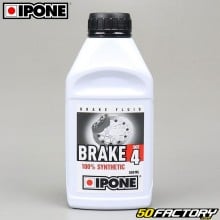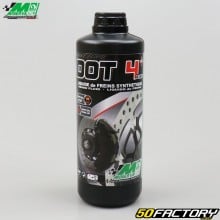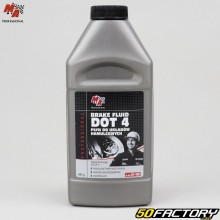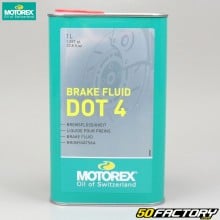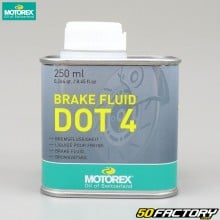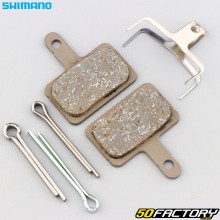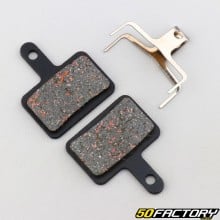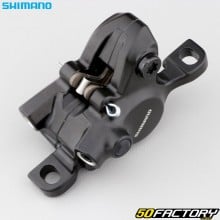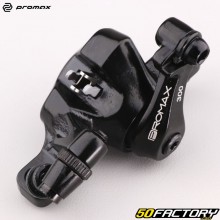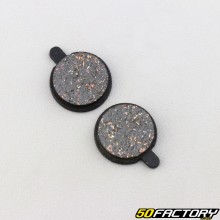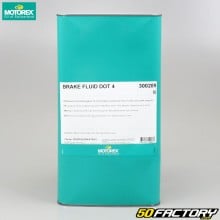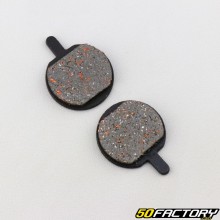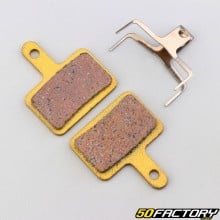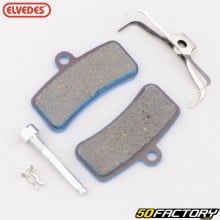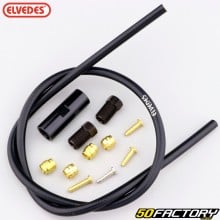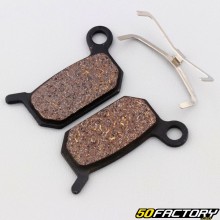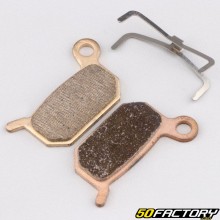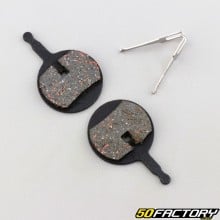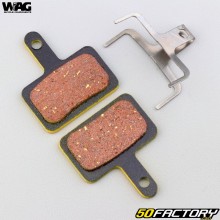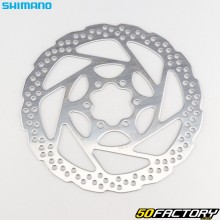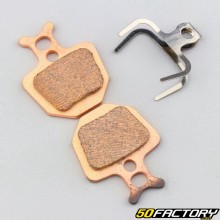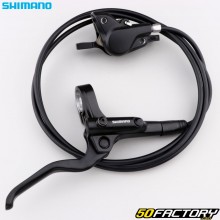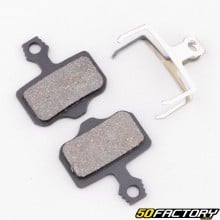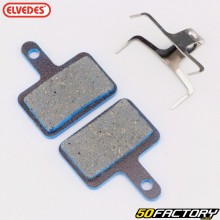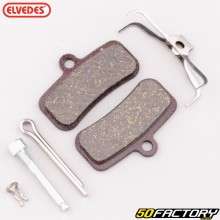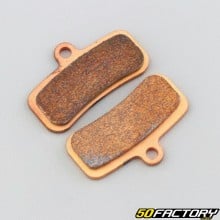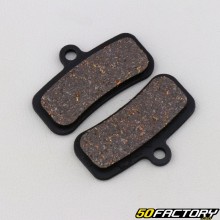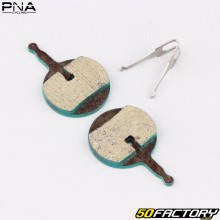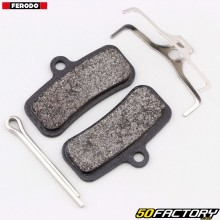 Disc brakes
Disc brakes
- IN STOCK5€90
- IN STOCK9€50
- IN STOCK9€00
- IN STOCK9€20
- IN STOCK5€50
- IN STOCK18€30
- IN STOCK9€20
- IN STOCK12€00
- STOCK EXHAUSTED6€40
-
- IN STOCK21€90
- IN STOCK8€90
- IN STOCK23€20
- IN STOCK10€70
- IN STOCK15€70
- IN STOCK8€30
-
- IN STOCK82€80
-
- IN STOCK7€60
- IN STOCK8€60
-
-
- IN STOCK8€50
- STOCK EXHAUSTED13€90
- IN STOCK9€70
-
-
- IN STOCK6€30
-
- IN STOCK13€40
- IN STOCK7€50
-
- IN STOCK5€30
-
-
-
- IN STOCK8€20
- IN STOCK17€90
- IN STOCK7€30
-
- IN STOCK22€60
Introduction to Disc Braking on Mountain Bikes
Le disc brake for mountain biking has revolutionized the world of off-road cycling. Having become a standard in this field, they are recognized for their undeniable efficiency and reliability. This type of braking is in fact capable of providing superior braking power and consistent performance, even in difficult conditions such as mud, rain or snow. Beyond these advantages, mountain bike disc brakes also stand out for theirar their durability and ability to withstand the rigors of the terrain. We will explore in detail how disc brakes work, their advantages and disadvantages, but we will also cover common problems associated with their use and how to solve them. We will also guide you in choosing the best model for your bike, taking into account your specific needs and your budget.
Operation and principle
The disc brake system on a mountain bike relies on a metal disc attached to the wheel and calipers that clamp onto the disc to slow or stop the bike. When the rider applies the brake lever, the brake fluid or brake cable (depending on whether the brakes are hydraulic or mechanical) pushes the brake pads against the disc, creating friction that slows the wheel. This system provides excellent modulation of the force braking and great stopping power.
The advantages of this braking technology
Braking power
Mountain bike disc brakes provide superior stopping powerar compared to rim brakes. This increased power allows for faster and more controlled braking, which is crucial on steep descents or in emergency situations. The immediate effect of this braking power is a noticeable improvement in safety, especially in demanding driving conditions.
Consistent performance
Unlike rim brakes, disc brakes maintain consistent performance regardless of weather conditions. Whether in rain, mud or snow, they provide a reliable and predictable response. In addition, their performance does not decrease with wear, ensuring effective braking throughout the life of the bike.
Compatibility
Disc brakes are compatible with a wide range of bikes. Whether you have a mountain bike, cross-country, enduro or downhill, there is a disc brake model that is suitable for your bike. In addition, they are available in different disc sizes to adapt to the specific needs of each rider. This flexibility of adaptation is a major advantage, allowing riders to customize their braking system according to their specific needs.
Sustainability
Another important advantage of MTB disc brakes is their durability. Made from durable materials, they are designed to withstand the toughest conditions, making them an ideal choice for mountain bike enthusiasts who enjoy embarking on off-road adventures.
Potential disadvantages
Initial cost
One of the main disadvantages of disc brakes is their higher initial cost.ar compared to rim brakes. Components and installation can be a significant investment, especially for high-end hydraulic brakes. However, consider this a long-term investment in your safety and riding performance.
Complexity of installation and adjustment
Disc brake setup and adjustment can be more complex than rim brakes. Hydraulic brakes require specialized knowledge to bleed the system and ensure it is working properly. Additionally, centering the calipers and adjusting the pads requires special attention. However, once mastered, this complexity can become a valuable skill for any cyclist.
Weight
Another downside to note is that disc brakes are generally heavier than rim brakes. This may be a factor to consider for those looking for lightweight mountain bike gear.
Common problems with these brakes
In the world of mountain biking, disc brakes, despite their many advantages, can sometimes present common problems. These problems can affect braking performance and the safety of the cyclist. It is therefore essential to identify them quickly and know how to solve them.
creaking
Brake squeal is a common problem with disc brakes. It is often caused byar contaminated platelets par oil or dirt. To resolve this issue, clean the pads and rotor with a specific brake cleaner. If the squeaking continues, the pads may need to be replaced.
Uneven wear
Uneven wear of the brake pads can lead to decreased braking performance. This problem can be caused by:ar misaligned calipers or poor quality pads. It is important to check the condition of the pads regularly and replace them if necessary.
Ineffective braking
Ineffective braking can be caused by several factors, such as a warped rotor, worn pads, or a lack of pressure in the hydraulic system. To resolve this problem, inspect the brake system components and replace or repair any faulty items.
Overheated
Another common problem is overheating, which can occur on long, steep descents. This can cause a loss of braking, a phenomenon known as "fade." To avoid this, it is recommended to use disc brakes with an efficient cooling system and to alternate between the front and rear brakes when descending.
Guide to installing a disc brake on a mountain bike
Preparation before installation
Before you start installing disc brakes on your mountain bike, make sure you have carefully read the manufacturer's instructions. Each model may have its own specificities. It is also crucial to check that your bike is compatible with disc brake installation.
The necessary tools
To install disc brakes on a mountain bike, you'll need a few essential tools: Allen keys, screwdrivers, wire cutters, a torque wrench, and, if you're installing hydraulic brakes, a brake bleed kit. Also, make sure you have a clean, well-lit work area.
Installation steps
1. Mount the disc to the wheel hub using the screws provided.
2. Attach the brake caliper to the bicycle frame or fork using the appropriate adapters.
3. Install the brake pads into the caliper.
4. Mount the wheel on the bike and make sure the disc is centered in the caliper.
5. Connect the brake cable or hydraulic hose to the caliper and brake lever.
6. Adjust the brake lever and bleed the hydraulic system if necessary.
Post-installation tips
After installation, it is important to test the brakes in a safe environment before hitting the slopes. Make sure the braking is effective and the brake lever has a good feel. If necessary, make adjustments.
Brake system maintenance
Cleaning
Regular cleaning of disc brake components is essential to maintain their performance. Use a specific brake cleaner to remove dirt and oil from the discs and pads. Avoid using harsh chemicals that could damage the components. Thorough cleaning also extends the life of your brakes and ensures optimal operation.
Setting
Your mountain bike's disc brake adjustment should be done periodically to ensure optimal performance. Check the centering of the calipers and adjust them if necessary. For hydraulic brakes, make sure the system is properly bled and that the brake levers provide firm response. It is also important to regularly check the cables and lines for wear or damage.
Replacement of worn parts
Brake pads and rotors wear out over time and need to be replaced regularly. Inspect the pads for any signs of significant wear and replace them if they are too thin. The rotors should also be checked for warping or cracks. Remember, if the braking system is not in good condition, your cycling safety is compromised.
Regular inspection
In addition to cleaning, adjusting and replacing parts, regular inspection of the brake system is essential. Examine all components, including calipers, rotors and pads, for signs of wear, damage or defects. This will help you anticipate problems and avoid unexpected breakdowns.
How to Choose the Right Disc Brake for Your Bike
Choosing the right disc brakes for your mountain bike is not something to be taken lightly. There are several factors to consider when making the right choice. These include the type of bike, riding style, and budget. Each criterion is important and must be carefully analyzed to find the brake that will best meet your expectations and needs.
Depending on the type of bike
The choice of disc brake depends on the type of mountain bike you have. For a mountain bike of cross-country, opt for lightweight brakes with good modulation. For an enduro or downhill mountain bike, opt for more powerful brakes with larger diameter discs.
Depending on driving style
Your riding style also influences the choice of disc brakes for your mountain bike. If you are an aggressive rider who enjoys fast descents, choose brakes with great stopping power and good heat dissipation. If you prefer long rides, opt for brakes with excellent modulation and low maintenance.
According to budget
Le budget is an important factor in choosing disc brakes for your mountain bike. High-end hydraulic brakes offer exceptional performance but can be expensive. Mechanical brakes are a more affordable alternative, offering good performance for a lower cost. Assess your needs and choose the model that best suits your budget.
According to the conditions of use
Finally, the conditions of use of your mountain bike are also a selection criterion. Par For example, if you often ride in wet or muddy conditions, disc brakes with good water and dirt resistance will be more suitable. Similarly, if you do fast and technical descents, brakes with high stopping power will be preferable.
Brand recommendations for your mountain bike
Quality brands
Some of the mountain bike disc brake brands include Shimano, SRAM, and Magura. These brands are known for their reliability, performance, and durability. They offer a wide range of products to meet the needs of all types of cyclists. Each brand has its own specialty, Shimano is known for its cutting-edge technology, SRAM for its diverse product line, and Magura for its ruggedness.
Budget brands
For those who have a budget tighter, brands like Tektro and Clarks offer budget-friendly mountain bike disc brake systems without sacrificing quality. These brands offer reliable, high-performance products at more affordable prices. They are ideal for those looking to outfit their bike without breaking the bank, while still getting decent braking performance.








